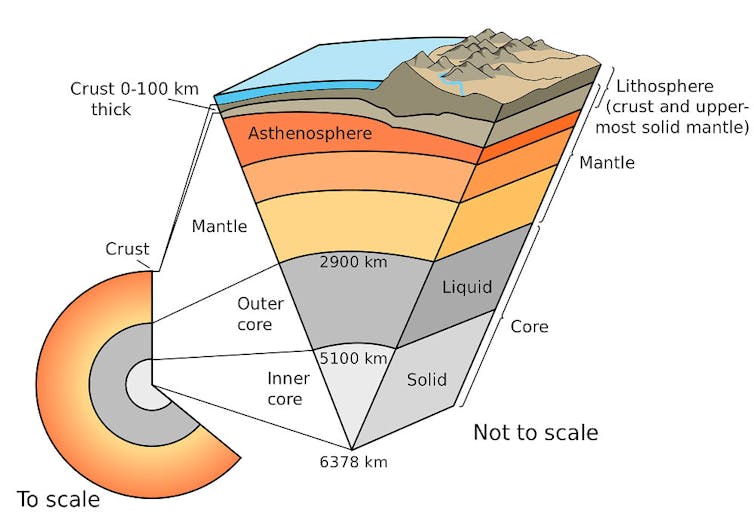ECOCIDE
Sanaa (AFP) – Yemen's Iran-backed Huthi rebels announced Thursday they had booby-trapped and detonated the Greek-flagged oil tanker Sounion, stranded in the Red Sea after a drone and missile attack earlier this month.
Issued on: 29/08/2024 -

This picture released on by Yemen's Huthi Ansarullah Media Centre shows fireballs and smoke aboard the oil tanker Sounion
© - / ANSARULLAH MEDIA CENTRE/AFP
The group's leader said the operation took place earlier this week. Since then, the rebels have agreed to allow rescue teams to access the ship.
A video shared on the rebels' media outlets showed masked men planting explosives on the vessel and then detonating them, causing several fires on board.
The Sounion was hit by the Huthis off the coast of Hodeida on August 21, according to the UKMTO maritime agency, which said at the time the attack caused a fire and cut engine power.
The European Union's Red Sea naval mission, Aspides, had rescued its 25 crew members last week, leaving the vessel -- now at risk of causing an oil spill -- abandoned.
The EU naval force was formed in February to protect merchant vessels in the Red Sea from attacks by the Huthi rebels, who have waged a campaign against international shipping that they say is intended to show solidarity with Palestinian group Hamas in its war with Israel in the Gaza Strip.
Rebel chief Abdul Malik al-Huthi on Thursday said his forces had "stormed" the tanker earlier this week.
He added in a speech that the Sounion had violated the Huthis' "embargo" on shipping to Israeli ports.
The vessel had departed from Iraq and was destined for a port near Athens, carrying 150,000 metric tons of crude oil, according to Greek port authorities.
On Wednesday, Iran's mission to the UN said the Tehran-backed Huthis had agreed to "a temporary truce for the entry of tugboats and rescue ships into the incident area", citing fires and "subsequent environmental hazards".
A Huthi spokesman confirmed late Wednesday on social media the group had granted a request from "numerous international parties, particularly European" to access the vessel.
The Aspides mission said on Thursday there were "reports that multiple fires have been detected in several locations on the main deck of the vessel", but "there's no oil spill, and the ship is still anchored and not drifting".
The EU mission was "preparing to facilitate any courses of action, in coordination with European authorities and neighbouring countries, to avert a catastrophic environmental crisis", it said on social media platform X.
© 2024 AFP
The group's leader said the operation took place earlier this week. Since then, the rebels have agreed to allow rescue teams to access the ship.
A video shared on the rebels' media outlets showed masked men planting explosives on the vessel and then detonating them, causing several fires on board.
The Sounion was hit by the Huthis off the coast of Hodeida on August 21, according to the UKMTO maritime agency, which said at the time the attack caused a fire and cut engine power.
The European Union's Red Sea naval mission, Aspides, had rescued its 25 crew members last week, leaving the vessel -- now at risk of causing an oil spill -- abandoned.
The EU naval force was formed in February to protect merchant vessels in the Red Sea from attacks by the Huthi rebels, who have waged a campaign against international shipping that they say is intended to show solidarity with Palestinian group Hamas in its war with Israel in the Gaza Strip.
Rebel chief Abdul Malik al-Huthi on Thursday said his forces had "stormed" the tanker earlier this week.
He added in a speech that the Sounion had violated the Huthis' "embargo" on shipping to Israeli ports.
The vessel had departed from Iraq and was destined for a port near Athens, carrying 150,000 metric tons of crude oil, according to Greek port authorities.
On Wednesday, Iran's mission to the UN said the Tehran-backed Huthis had agreed to "a temporary truce for the entry of tugboats and rescue ships into the incident area", citing fires and "subsequent environmental hazards".
A Huthi spokesman confirmed late Wednesday on social media the group had granted a request from "numerous international parties, particularly European" to access the vessel.
The Aspides mission said on Thursday there were "reports that multiple fires have been detected in several locations on the main deck of the vessel", but "there's no oil spill, and the ship is still anchored and not drifting".
The EU mission was "preparing to facilitate any courses of action, in coordination with European authorities and neighbouring countries, to avert a catastrophic environmental crisis", it said on social media platform X.
© 2024 AFP


















